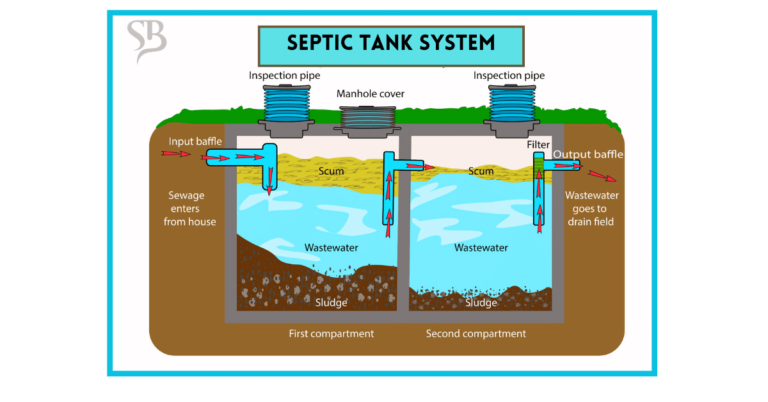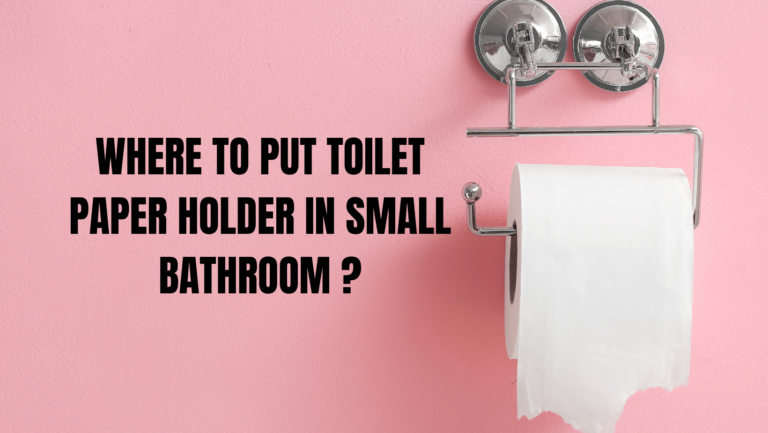When it comes to bathroom design, a crucial consideration is the capacity of the plumbing system to handle the load. One essential component of the plumbing system is the drain pipe, responsible for carrying waste and wastewater away from the toilets to the sewer or septic system. The size of the drain pipe plays a pivotal role in determining the number of toilets that can be safely connected to it.
But how many toilets can you place on a 3-inch drain?
The number of toilets that can be connected to a 3-inch drain pipe depends on local plumbing codes and regulations, as well as the distance and slope of the drain line. In most residential applications, a 3-inch drain pipe can effectively accommodate one toilet. However, if local codes allow, you might be able to connect two toilets to a 3-inch drain, provided that the drain line is properly sloped, and a sanitary tee or a wye fitting is used for the connection.
It’s crucial to adhere to local plumbing codes and consult with a professional plumber to ensure compliance and avoid potential drainage problems or code violations. In commercial or larger-scale applications, larger diameter drain pipes are typically used to accommodate multiple toilets.
1. Understanding Drain Pipe Capacity
Before delving into how many toilets a 3-inch drain can support, it’s crucial to understand the concept of drain pipe capacity. The capacity of a drain pipe is determined by its diameter, usually measured in inches. A 3-inch drain pipe is commonly found in residential bathrooms, and it can handle a certain volume of waste and water flow. However, it’s essential to recognize that this capacity is not unlimited, and exceeding it can lead to clogs, slow drainage, and potential sewer backups.
2. Calculating Drain Load for a Single Toilet
To determine how many toilets can be connected to a 3-inch drain, we need to assess the drain load for a single toilet. The drain load represents the maximum amount of waste and water that a toilet can discharge into the drain pipe during one flush.
For standard residential toilets, the drain load typically ranges from 1.28 to 1.6 gallons per flush (GPF). To make calculations easier, we’ll take the average value of 1.44 GPF and convert it to cubic feet per flush (CFPF):
1.44 GPF ≈ 0.018 CFPF

3. Accounting for Daily Flushes
To determine the total daily drain load for a single toilet, it’s essential to consider the number of times the toilet is flushed each day. On average, a person flushes the toilet 4 to 6 times per day. Assuming 5 flushes per day, the total daily drain load for a single toilet would be:
Total Daily Drain Load = 0.018 CFPF/toilet × 5 flushes/day = 0.09 CFPF/day
4. Assessing 3-Inch Drain Capacity
Having calculated the total daily drain load for a single toilet, we can now evaluate the capacity of a standard 3-inch drain pipe. A 3-inch drain pipe can handle a flow rate of approximately 35-40 gallons per minute (GPM). To convert GPM to CFPF, we can use the following conversion:
1 GPM ≈ 0.002 CFPF
Therefore, the capacity of a 3-inch drain pipe in CFPF is:
Drain Capacity = 35 GPM × 0.002 CFPF/GPM ≈ 0.07 CFPF
5. Calculating the Maximum Toilets on a 3-Inch Drain
With the total daily drain load for a single toilet and the capacity of the 3-inch drain pipe, we can now determine the maximum number of toilets that can be placed on the drain without overloading it:
Maximum Toilets = Drain Capacity / Total Daily Drain Load
Maximum Toilets = 0.07 CFPF / 0.09 CFPF/toilet ≈ 0.77
Since you cannot have a fraction of a toilet, the practical solution is to install a maximum of one toilet on a 3-inch drain to ensure proper drainage.

Practical Solutions for Adding Toilets
If your bathroom design necessitates more than one toilet, several practical solutions can accommodate the additional load without compromising the drainage system:
1. Increase Drain Pipe Size:
One of the most effective solutions is to upgrade the existing 3-inch drain pipe to a larger size, such as a 4-inch drain pipe. A 4-inch drain pipe has a significantly higher capacity and can handle multiple toilets without issues. However, this solution may require some plumbing work and should be carried out by a licensed professional.
2. Install a Separate Drain Line:
If you have space constraints or prefer not to alter the existing plumbing, consider installing a separate drain line for the additional toilet. Each toilet will have its dedicated drain pipe, preventing overload issues on the main drain line and ensuring proper drainage for all fixtures.
3. Opt for Low-Flush Toilets:
Another option is to choose low-flush toilets that consume less water per flush. Low-flush toilets are designed to use 1.28 GPF or even less, reducing the drain load and allowing for more toilets to be connected to the 3-inch drain.
4. Implement Dual-Flush Toilets:
Dual-flush toilets provide users with the option to choose between a full flush for solid waste and a partial flush for liquid waste. These toilets help conserve water and minimize the strain on the drain pipe by offering different flush volumes.
5. Consider Upgrading the Entire Plumbing System:
If you are planning a comprehensive bathroom remodel or building a new house, it might be worth considering upgrading the entire plumbing system. Opting for a larger main drain line, such as a 4-inch or 6-inch diameter, can provide ample capacity to accommodate multiple toilets and other fixtures comfortably.
Types of Toilets for Optimal Drainage
Choosing the right type of toilet can also contribute to proper drainage and efficient water use in your bathroom. Here are some types of toilets to consider:
1. Gravity-Flush Toilets:
Gravity-flush toilets are the most common and traditional type of toilets. They use the force of gravity to clear waste from the bowl and into the drain pipe. These toilets are reliable, simple, and can be found in various styles, but they typically consume more water per flush than other options.
2. Pressure-Assisted Toilets:
Pressure-assisted toilets use compressed air or water to provide an extra boost of force during flushing. This design ensures more powerful flushes and better waste removal, making them ideal for bathrooms with long or complex drain lines. However, they can be noisier and more expensive than gravity-flush toilets.
3. Dual-Flush Toilets:
As mentioned earlier, dual-flush toilets offer two flushing options, typically a full flush for solid waste and a reduced flush for liquid waste. This water-saving feature can help reduce the overall drain load and contribute to a more environmentally-friendly bathroom design.
4. High-Efficiency Toilets (HETs):
High-efficiency toilets are a category of water-conserving fixtures that meet specific standards for water usage. These toilets are designed to use no more than 1.28 GPF, making them significantly more water-efficient than older models. HETs can help lower your water bills and reduce the strain on your plumbing system.

The Importance of Regular Maintenance
Regardless of the number of toilets connected to the 3-inch drain, proper maintenance is essential to ensure a healthy plumbing system. Here are some maintenance tips to prevent clogs and backups:
1. Avoid Flushing Non-Biodegradable Items:
Only flush toilet paper and human waste down the toilet. Avoid flushing non-biodegradable items, such as baby wipes, sanitary products, or cotton balls, as they can lead to clogs and damage the plumbing system.
2. Regularly Inspect and Clean the Drain:
Perform routine inspections of the drain system and clean it as needed. Use a plunger or plumbing snake to remove minor clogs, but for more severe issues, seek professional help.
3. Schedule Professional Plumbing Inspections:
Arrange for regular plumbing inspections by licensed professionals. They can identify potential issues before they escalate, ensuring the smooth operation of your plumbing system.
4. Educate Household Members:
Educate everyone in your household about proper toilet usage and the importance of conserving water. Teaching good habits can go a long way in preventing plumbing problems.
Wrapping Up
Understanding the capacity of your plumbing system’s drain pipe is vital when planning your bathroom design. A 3-inch drain can typically support one toilet without overloading the system. However, by considering the drain load, exploring practical solutions like upgrading the drain pipe, installing separate drain lines, or opting for water-efficient toilets, you can accommodate additional fixtures in your bathroom design.
Remember that proper maintenance and choosing the right type of toilet also play significant roles in ensuring optimal drainage and avoiding potential plumbing issues. By following the guidelines provided in this comprehensive guide, you can create a functional and efficient bathroom that meets your needs while protecting your plumbing system for years to come.







